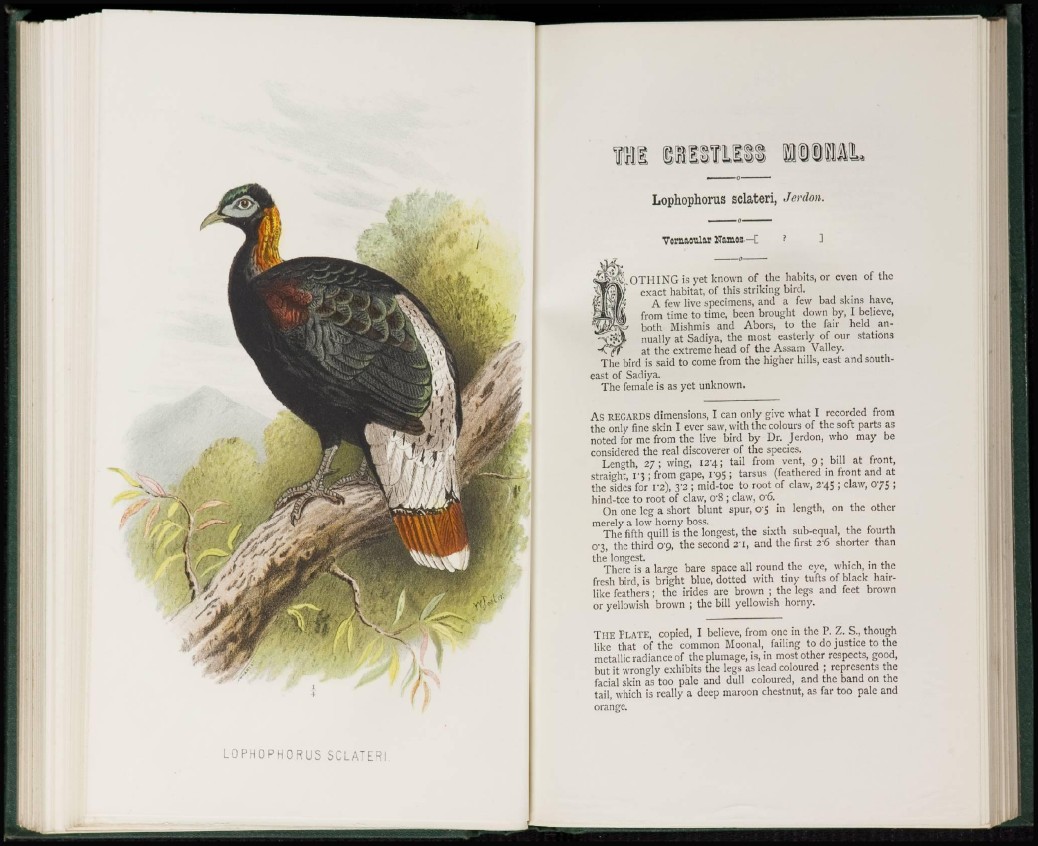
L O P H O P H O R U S SCLATERI
Lophophorus sclateri, Jerdon.
Vernacular Names—C t ]
OTIIING is yet known of the liabits, or even of the
exact habitat, of this striking bird.
A few live specimens, and a few bad skins have,
from time to time, been brought down by, I believe,
both Mishmis and Abors, to the fair held annually
at Sadiya, the most easterly of our stations
at the extreme head of the Assam Valley.
The bird is said to come from the higher hills, east and southeast
of Sadiya.
The female is as yet unknown.
As REGARDS dimensions, I can only give what I recorded from
the only fine skin I ever saw, with the colours of the soft parts as
noted for me from the live bird by Dr. Jerdon, who may be
considered the real discoverer of the species.
Length, 27 ; wing, 124; tail from vent, 9 ; bill at front,
straight, I"3 ; from gape, i'95 ; tarsus (feathered in front and at
the sides for V2), y2 ; mid-toe to root of claw, 245 ; claw, 075 ;
hind-toe to root of claw, O'S ; claw, 06.
On one leg a short blunt spur, 05 in length, on the other
merely a low horny boss.
The fifth quill is the longest, the sixth sub-equal, the fourth
0'3, the third 09, the second 2 T , and the first 26 shorter than
the longest.
There is a large bare space all round the eye, which, in the
fresh bird, is bright blue, dotted with tiny tufts of black hairlike
feathers ; the irides are brown ; the legs and feet brown
or yellowish brown ; the bill yellowish horny.
THE PLATE, copied, I believe, from one in the P. Z. S., though
like that of the common Moonal, failing to do justice to the
metallic radiance of the plumage, is, in most other respects, good,
but it wrongly exhibits the legs as lead coloured ; represents the
facial skin as too pale and dull coloured, and the band on the
tail, which is really a deep maroon chestnut, as far too pale and
orange.